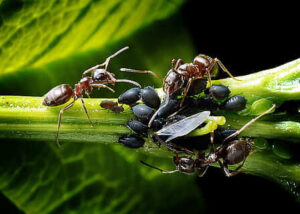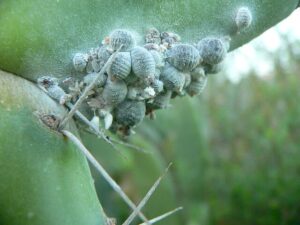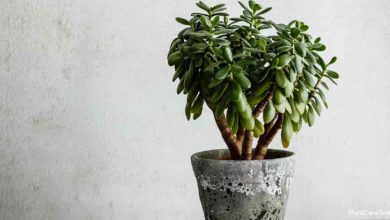Pests and Diseases of Weeping Willow: [Detection, Causes and Solutions]

 Popularly known as Weeping Willow, this deciduous tree is native to China and can reach up to 20 meters in height.
Popularly known as Weeping Willow, this deciduous tree is native to China and can reach up to 20 meters in height.
This specimen is widely used in gardening, being planted alone , which allows it to highlight its beauty and bearing much more.
However, like many other plants, Weeping Willow can present a variety of problems represented by pests and diseases.
They can damage both the development and the beauty of the tree , making it lose its attractiveness and leading to its death if care is not taken. That is why, to avoid inconveniences, today we will present some of the main problems that this tree can have.
Aphid
 This pest is one of the most popular in a diverse list of plants and trees , since its diet is quite varied.
This pest is one of the most popular in a diverse list of plants and trees , since its diet is quite varied.
In general, they are not usually seen with the naked eye , because they are small animals and can be properly hidden in such a large tree.
In spite of this, the damages that they can produce are quite important, and can damage the development and health of the specimen. The aphid feeds on the tender and still young parts of the plant , so it can take a while to notice its presence specifically.
For this reason, it is important to have some preventive measures , such as placing insecticides on the tree from time to time. Consider that it is not necessary for the plant to be impregnated with the product, it will suffice for it to be sprayed and well protected.
Woodlouse
 Another pest that may be common in a Weeping Willow specimen is the mealybug , which is opportunistic and tends to feed on tree sap .
Another pest that may be common in a Weeping Willow specimen is the mealybug , which is opportunistic and tends to feed on tree sap .
This pest is difficult to eradicate, since it has a shell that protects it and makes it difficult for the insecticide to enter its body.
On the other hand, they tend to reproduce quite quickly , making their final elimination much more complex. The best thing, in case of suffering from this plague, is to prune the affected areas as quickly as possible, taking care not to harm the tree.
Likewise, the insecticide treatment against mealybugs will work properly in larvae and in the nests that may remain in the specimen. It can also be noted that the mealybug can create a fairly friendly environment for some diseases such as the bold .
To avoid this, it is advisable to use an anti-black fungicide and take care to spray the tree generously so as not to run any risk.
Willow scab
 Caused by the fungus Pollaccia saliciperda , willow scab is a common disease among members of the willow family.
Caused by the fungus Pollaccia saliciperda , willow scab is a common disease among members of the willow family.
Its appearance can be overlooked initially , since it does not cause major abnormalities at first.
However, it is an accelerated spread fungus, making the tree completely a victim of it in a short time.
This makes it quite a complicated infection to control and that you should take special care in everything that corresponds to its treatment. In case of infestation, it is best to remove all affected areas , taking into account that they cannot belong to any compost .
In this sense, it is recommended to burn the damaged parts or dispose of them in the trash , moving it away from any place where they can survive. There are also chemicals specially designed for the treatment of this disease.
Although we must point out that, on occasions, the survival of the fungus and new outbreaks of infection may occur .
Galena
 This disease is mostly associated with young weeping willows , since they have much less strength and vigor.
This disease is mostly associated with young weeping willows , since they have much less strength and vigor.
Its trigger is the Stereum purpureum fungus , which spreads rapidly through the specimen, leaving it weak and stunting its development.
The main way to recognize the infection is because it causes spots or whitish areas on the plant . Keep in mind that if the tree is not robust enough it can still be seriously affected by the disease.
To eradicate it, it is convenient to quickly prune all the parts that have been damaged by the fungus. On the other hand, the use of potassium and phosphorus to nourish the tree and help its early regeneration is also essential.
Manganese and iron are other components that can help give it greater vigor and favor the strengthening of the weakened tree. However, it is important that you refrain from using prepared commercial fertilizers, since they contain nitrogen and are not convenient .
Powdery mildew
 This is usually a very common fungus in Weeping Willow, causing a disease that can quickly become intense and difficult to treat.
This is usually a very common fungus in Weeping Willow, causing a disease that can quickly become intense and difficult to treat.
The best way to find this fungus is by looking for a whitish or gray-looking powder , which it generates and leaves on the leaves.
This powder makes the tree look dull in color, promoting it to gradually lose its vitality. Regarding the treatment, it is convenient that you use formulas rich in sulfur and copper that promote the control of the disease if it is not very intense.
If it is high intensity, you will need to carefully cut the affected areas and dispose of them responsibly. Taking care and ensuring the health of the Weeping Willow is one way to ensure that it is a good acquisition to decorate a garden.
Keep in mind that it is a large and well distributed tree, which will be able to live for a long time where you plant it . Therefore, it is convenient that you keep it supervised, as well as well nourished and protected, preventing pests or diseases from appearing.
Similarly, in the event that they occur, it is essential that a prompt and timely treatment be carried out .




![Photo of White Orchid Care: [Dirt, Moisture, Pruning and Problems]](https://www.complete-gardening.com/wp-content/uploads/2021/06/41a7HSpH3NL._SL500_-390x220.jpg)